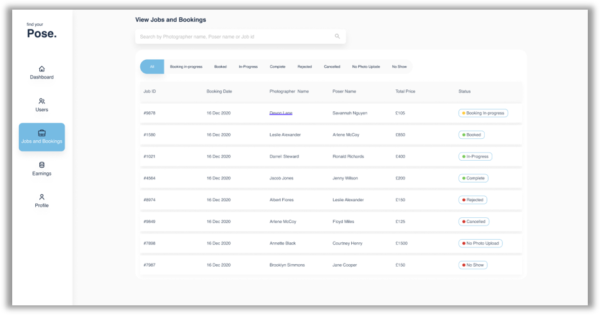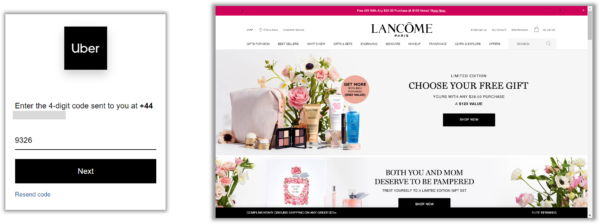Starting a new progressive web app (PWA) project or redeveloping elements of your business into a PWA format can open many doors to new audiences and client experiences, as well as improve the overall visitor journey. As the final instalment of our PWA mini-series, we will look to the future as we explore some of the top benefits of creating a PWA right now – allowing you to take full advantage of the user benefits, business benefits, and marketing benefits we discussed throughout our past few posts.
Here are some of the top opportunities to consider when deciding to develop a PWA for your startup, side business, or established enterprise:

Reaching Gen Z Users
Gen Z spend an average of almost 3 and a half hours online every day – and that’s just time spent on their phones! Similarly, older generations are also spending increasing long amounts of time on social media and other platforms. With this in mind, the app experience is very familiar to a wide demographic of users, making the transition to a PWA much easier for many as the features they use in native apps can be made available in a PWA.
Alongside this, statistics increasingly show that Gen Z and other generations are gradually moving away from app installs, especially when the app requires them to create an account before accessing functionality. A survey by Heady showed that the majority of users found it “frustrating” or “extremely frustrating” to be forced to download an unfamiliar app to place orders or use a product to its full functionality. This may be due to them not using the app again; the app requesting too many permissions and draining their battery; or simply due to replacing the app with a competitor’s product – but ultimately, over 78% of users said they uninstalled apps on a monthly basis so creating the best possible experience for your users will help keep them engaged for longer.
PWAs alleviate many of these pain points as they do not need to be installed if the user does not want to install them (they can be used on the web), so they won’t be constantly running in the background of the device and draining the battery. As PWAs also update automatically, there will be no forced installs or update delays which will minimise technical glitches that might otherwise drive consumers away.

More Cost-Effective
As with any project, there will come the question of price. Generally speaking, a progressive web app will be quicker to build, as well as not requiring extra time for app store submissions and variants on specific platforms, which will further reduce the time required to build (and deploy) the app.
Functionality can also be added gradually and your team can easily invite users to try a beta version of the app early on without the stumbling blocks of testing app store apps, such as generating builds and handling version control for different testers. This makes it easier to build on early feedback and prevent large functionality changes down the line if an aspect of the app needs to be changed.
For many businesses, a PWA can also completely replace a website – further reducing the development costs and timescales to launch and getting your product on the market quicker without the need to juggle multiple projects or launch dates (and also making things easier for your marketing department!).
It’s usually expected that your PWA will require a content management system and this can be built completely bespoke as part of the initial project or down the line, cutting your long-term costs by removing third-party content management systems and putting you in full control. By having your own content management hub and hosting it on your (or our) secure servers, you’re also guaranteed better up-time without the need to rely on other businesses to maintain their systems for yours to work!

Improved Offline Capability
As more people are getting online, it’s easy to forget about offline functionality for your clients but it’s still an important aspect of development as a good, stable signal is never guaranteed and depending on your location, you may experience a drop in connectivity (and as we all know from experience, it tends to happen at the most inconvenient time!).
In particular, trade shows, business events, client pitches, and other similar outreach efforts can be impeded by poor internet connection, device compatibility, or a lack of guest WiFi. This is where a progressive web app can save the day, as the main functionality can be retained for offline use and will resync with the live database as soon as the internet connection is restored.
Alongside this, PWAs also work better in low-signal areas as page elements are loaded when requested, instead of all loading at the same time – reserving bandwidth for the items you want to see right now and preventing buffering. This is done using caching and “lazy loading” – meaning that anything that appears on the screen at that exact time will be fully interactive and other elements will be called when the user scrolls or navigates to them.
E-commerce stores make the best use of this as it ensures that orders can still go through even if the client got cut off halfway through the checkout process and can help ensure the order still goes through successfully – combating technical errors at the critical stages of the user journey and reducing drop-off rates (as well as preventing loss of sales).

Loyalty Schemes
Another fantastic advantage of progressive web apps is the ability to build customer loyalty over time – even if they switch their device. PWAs offer a range of ways to log in: from using biometrics, to the old-fashioned username and password, and even support two-factor authentication (2FA). This means that users will always have access to their account, even if they change their handset or device as the app can be accessed from anywhere.
This allows you to regularly check in with clients based on what they’ve looked at (e.g. products they’ve viewed or last time they signed in) and send a targeted marketing communication, discount codes, or relevant further detail to provide help and advice (all in line with GDPR guidelines, of course).

Range of App Download Methods
While the Google Play Store, Apple App Store, and Amazon App Store may be off-limits for a PWA that has not been converted into a hybrid app (at least for now!), increasingly web apps are becoming available to download on alternative apps stores such as the Microsoft App Store for desktop, as well as the Chrome Web Store available within the Google Chrome browser.
While being part of a web store is by no means essential, it can help new users discover your app and also help clients become acquainted with your offering prior to download, as well as boosting your overall reputation through client reviews and recommendations. By offering multiple channels for app downloads, you can also take advantage of app store optimisation techniques to assist your existing marketing efforts and showcase your app beyond your website (especially if your website is your app!)
Looking to enhance your business offering with a progressive web app or mobile app? Email contact@zudu.co.uk to book a consultation to get the ball rolling for your next project.
Explore the benefits of developing a progressive web app (PWA) for your business in our free whitepaper.








